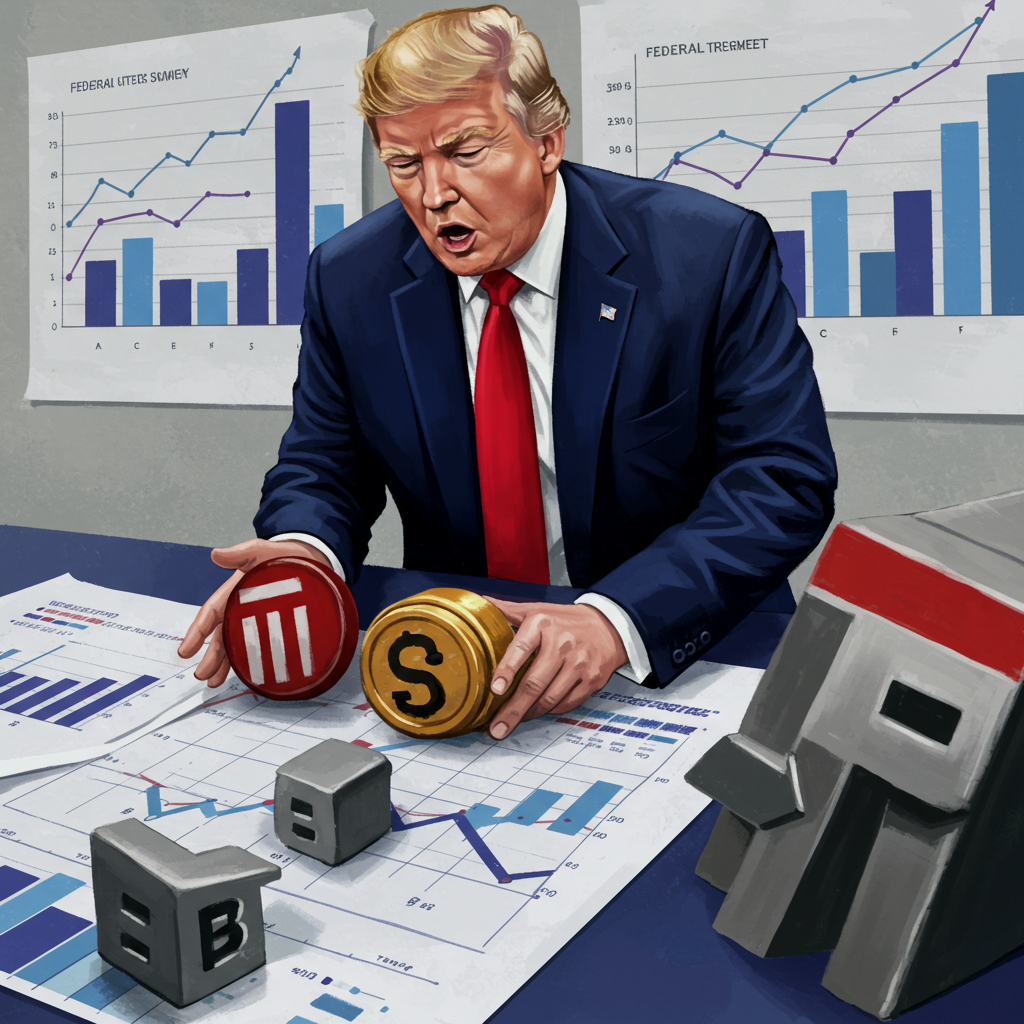Investors and economists are closely watching the Federal Reserve as it navigates a complex economic landscape shaped by escalating geopolitical tensions and the potential impact of broad new tariffs. These factors pose significant inflation risks, complicating the central bank’s plans for adjusting interest rates.
At the heart of the matter is how events unfolding globally and politically could force the Fed to reconsider its monetary policy direction, particularly concerning anticipated rate cuts.
Geopolitical Jitters Weigh on Policy
Recent developments, including President Trump’s increasingly assertive stance regarding Iran and the broader turmoil in the Middle East, are creating ripples of uncertainty in global markets. While not causing panic, this instability presents a curveball for the Fed. Historically, conflict in the region can impact energy prices, potentially fueling inflation – a key concern for the central bank.
Federal Reserve Chair Jay Powell is expected to address how these international events might influence the central bank’s economic forecasts and the path forward for interest rates during upcoming public appearances. Markets are eager to hear his assessment of whether rising oil prices, driven partly by geopolitical risk, could necessitate keeping rates higher for longer than previously planned.
Tariffs: A Complex Economic Headwind
Adding another layer of complexity are proposals for wide-ranging tariffs. Unlike previous, more targeted trade actions, these potential tariffs aim broadly at major trading partners, including significant rates on goods from China, India, the European Union, Vietnam, and Mexico.
Economists warn that these comprehensive tariffs fundamentally alter the global trading system built over decades. Where companies once could reroute supply chains to unaffected countries, the proposed tariffs leave limited viable alternatives. Relocating production back to the United States is often prohibitively expensive due to labor costs.
This situation forces businesses into difficult choices: either pay the higher tariffs, which will likely eat into profit margins and potentially lead to higher consumer prices (adding to inflation), or undertake massive, costly, and uncertain supply chain overhauls. Such widespread supply chain disruption and increased import costs create a direct inflationary pressure point that the Fed cannot ignore.
The Fed’s “Uncomfortable Purgatory”
Caught between these external pressures and a relatively strong domestic economy – characterized by low unemployment (around 4.2%) and inflation that had made progress slowing down (though recently showing a slight uptick, like the 2.7% annual rise seen in recent consumer price data) – the Federal Reserve finds itself in what some describe as “an uncomfortable purgatory.”
Without the unpredictable impact of tariffs and heightened geopolitical risk, the Fed might already be considering rate cuts to further support economic activity. Indeed, earlier signals pointed towards potential rate reductions. However, the potential for tariffs and Middle East tensions to simultaneously push inflation higher and potentially slow growth puts the Fed in a difficult position.
Rising inflation typically calls for stable or higher rates, while slowing growth or rising unemployment might warrant cuts. Facing these conflicting signals, Fed officials, including Chair Powell, have indicated a preference for patience, choosing to wait for clearer economic signals before making significant policy shifts. The consensus among many economists is that the Fed is likely to hold its benchmark interest rate steady in the near term.
Political Pressure and the Path Ahead
Further complicating the picture is ongoing political pressure from the White House to lower borrowing costs. President Trump has publicly advocated for significant rate cuts, arguing they would boost the economy and reduce the government’s interest payments on the national debt, a concern also highlighted by projections showing substantial debt growth.
While the Fed maintains its independence and statutory mandate to pursue stable prices and maximum employment, the political backdrop adds another dynamic to the environment in which its decisions are made. Chair Powell has stated the Fed will base its decisions solely on how economic conditions actually evolve, not on speculation about future political actions.
Ultimately, the path forward for interest rates remains uncertain. The Federal Reserve will continue to monitor inflation data, analyze the real-world impact of tariffs and supply chain adjustments, and assess geopolitical developments. The approach appears to be one of caution: waiting several months for a clearer economic picture before making a move, believing that “later and correct is better than sooner and wrong.” The interplay between global events, trade policy, and domestic economic indicators will continue to challenge the Fed’s crucial decisions on the future of interest rates.



